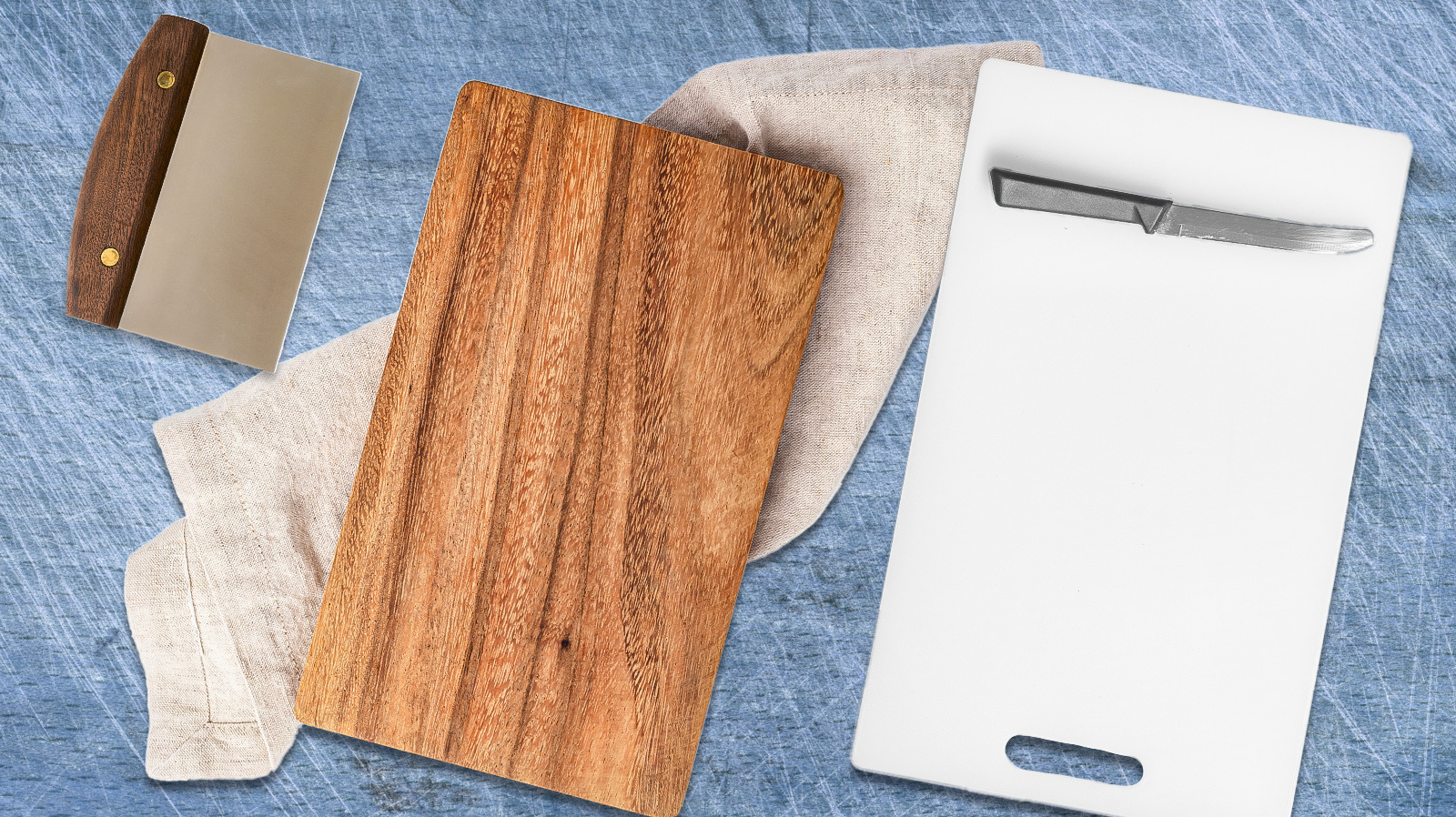Cutting boards are a must-have for every kitchen. Whether you’re cooking daily for a big family or preparing simple meals for one, a quality cutting board is an essential tool that every cook, regardless of their cooking skills, should have. I learned the importance of using a cutting board in culinary school, and as a personal chef who cooked in clients’ homes regularly, I always carried my cutting boards with me to ensure I had the right board for the job.
Not only do cutting boards provide a stable surface for food prep, but a good cutting board also prevents cross-contamination between food. When used properly, they can make food prep simple and safe. Choosing the best cutting board for the job can be tricky. Once you have made your choice, there are steps you should take to use and care for your boards to keep them in good working order. These tips will help you make the most of your cutting boards.
Pick plastic or wood, and choose wisely
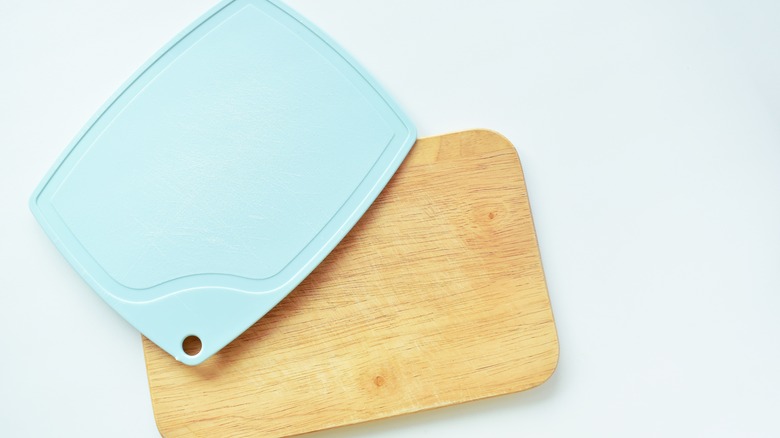
The types of food you cook and how frequently you use your boards should influence the kind of cutting boards you buy. You don’t have to spend a fortune outfitting your kitchen with fancy cutting boards. Having worked in professional kitchens, I can confirm that you rarely find line cooks or chefs using pricey cutting boards. They focus on cost and durability, and you should, too.
Plastic is a popular choice for cutting boards. It’s lightweight, inexpensive, and easy to keep clean. It’s a good surface for chopping raw proteins because you can pop it into the dishwasher to sanitize it after each use. But, contrary to popular belief, plastic cutting boards can carry bacteria in the cuts and slashes that will develop on the boards with repeated use. Those cuts can give bacteria a place to hide and multiply.
Wood cutting boards are an excellent all-purpose option. They typically last longer than plastic and are easier on your knives. Because wood is porous, many believe it’s more hospitable for bacteria, but that’s not necessarily the case. The natural fiber in wooden cutting boards can hold bacteria beneath the board’s surface, where it will eventually die. Wooden boards can be more expensive than plastic and require more work to keep them in good shape, but they’re a good choice for chopping all kinds of food if you have the budget and time to care for them.
Never chop on a glass cutting board
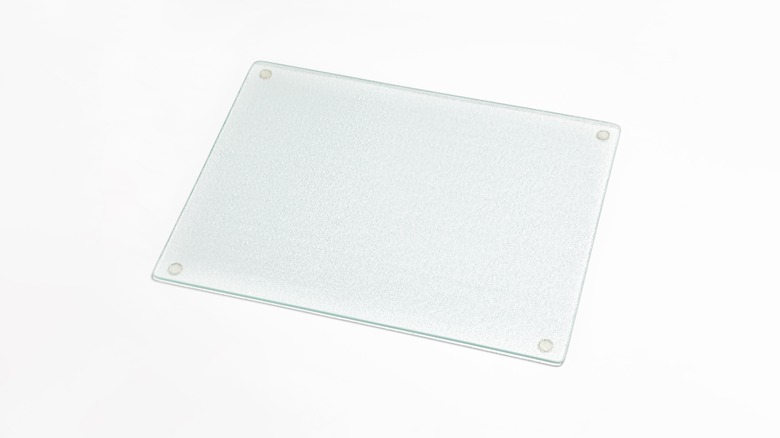
Glass cutting boards may be pretty, but they’re terrible for chopping food. At first glance, they may seem like a safe choice. Glass is nonporous and, therefore, not vulnerable to harmful bacteria, like porous surfaces. It’s easy to clean and dishwasher safe, but this is where the benefits of glass cutting boards end. Culinary professionals never use glass cutting boards because of their fragility. Toting around a delicate glass board would never have worked for me as a chef because of the potential for breakage. Kitchens, in general, are tough environments, and boards need to be able to take a beating.
Glass cutting boards are also dangerous because of the hard, slick surface most have. The hardness will cause your knives to dull quickly because glass won’t yield to your knife’s blade. This can also cause your blade to slip and slide as you cut, making it easy to cut yourself as you work. Save the glass cutting boards for serving.
Remove lingering odors with lemon and salt
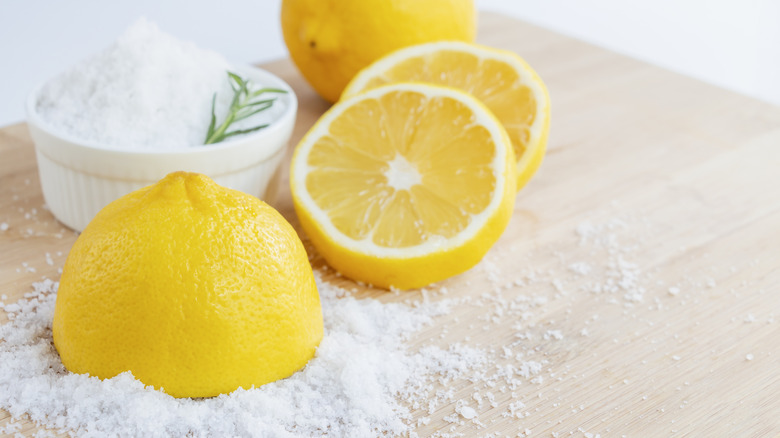
No matter what kind of cutting boards you have, keeping them in tip-top shape is essential. In addition to cleaning them with good old soap and water, or whatever’s best for the material your board’s made of, at some point, you will likely need to take some additional steps to keep your boards smelling fresh. Over time, even boards cleaned and sanitized regularly can carry the odors of the foods you’ve cut on them.
A simple treatment with items you likely have in your fruit bowl and pantry can eliminate any undesirable smells on your cutting boards. Lemon and salt work together to create a cleaning mixture that eliminates odors and removes stains. Simply sprinkle your cutting boards with salt and use half of a lemon, cut side down, like a scrub brush, to grind the salt into the board. The acid in the lemon attacks any odors on the board, and the salt works as an abrasive to help remove stains. Once you’ve scoured the entire board, let it sit for up to 10 minutes before using a bench scraper to clear off the surface. Rinse your board thoroughly; let it air dry, and it will smell brand new.
I use my cutting boards daily in my work and give them this lemon and salt treatment every couple of weeks. If you’re using your boards less frequently, doing this once a month or every couple of months might work for you.
Mix household supplies to remove stains from plastic cutting board
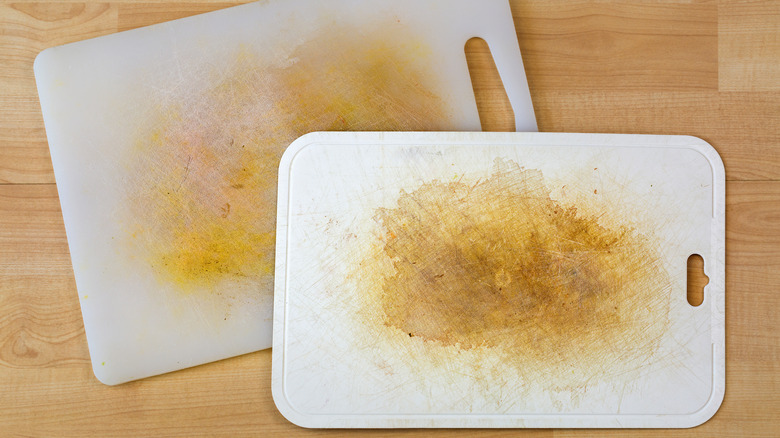
sasimoto/Shutterstock
If you’re using plastic cutting boards that have become stained from wear and tear, you don’t have to replace them immediately. You can get rid of most food stains from plastic boards with just a few items you likely have in your home already, like hydrogen peroxide, dish soap, and baking soda. These three ingredients contain their own cleaning abilities, but when combined, they turn into a stain-removal powerhouse. I’ve used baking soda to remove cooked-on stains from pots and pans for years, and it works just as well on plastic cutting boards when combined with dish detergent and peroxide.
Mix one part hydrogen peroxide with one part dish detergent and three parts baking soda until a paste forms. Rub the paste onto your plastic cutting board and leave it for about an hour. Rinse and wash the board well. Any stains should have disappeared. For tougher stains, mix one part dish soap with one to two parts peroxide and three to four parts baking soda. Rub this mix over your board and let it sit overnight. The next morning, after a good scrub and rinse, your board should be stain-free.
Use a damp paper towel to steady your cutting board
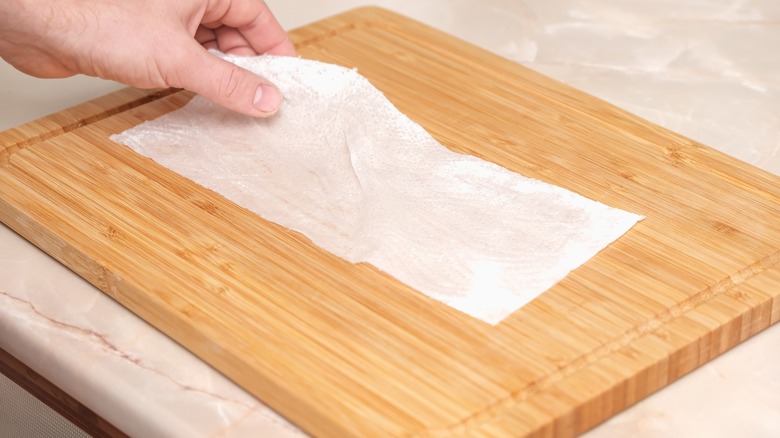
No one wants to try slicing, dicing, or carving food on a cutting board that can move around. This is not the type of moveable feast any cook wants. A cutting board that is not steady and firmly in place will make it difficult — if not impossible — to cut your food properly, and it’s also dangerous. No matter how skilled you are with your knife, attempting to chop on a shifting surface will likely lead to cuts on your fingers instead of your food. This is a week one lesson in culinary school.
There’s one thing you should do with your cutting board before using your knife. It’s the simplest way to ensure your cutting board, whether plastic or wood, stays in place. Grab a paper towel. Run the paper towel under water until it’s damp. Squeeze out any excess liquid and place the damp paper towel on your counter underneath your cutting board to keep it in place. A thin, damp kitchen towel will also work well.
Oil wooden cutting boards regularly
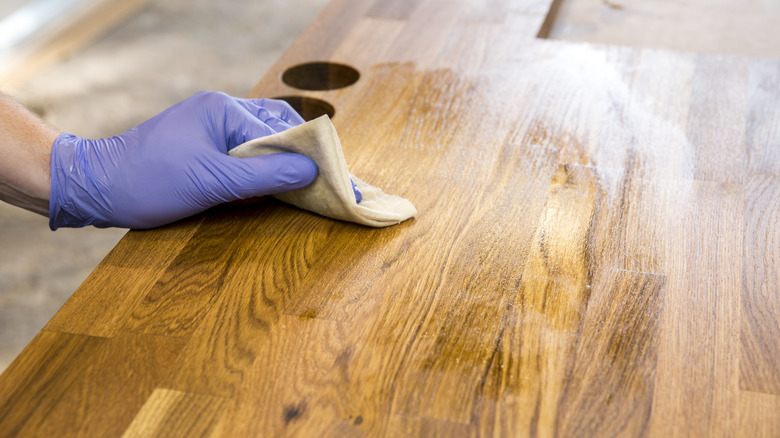
Taking time to care for your equipment is a necessary part of being a chef. We sharpen our knives, clean our kitchens diligently, and if we’re using wooden cutting boards, we oil them regularly. Home cooks should adopt this habit, as well.
Oiling your wooden cutting boards serves multiple purposes. It not only helps keep the boards looking good, but the oil helps extend the life of your boards by keeping them from drying out and absorbing moisture, which can cause them to crack. It also prevents food and bacteria from seeping into the board. You should only use food-grade mineral oil or refined coconut oil to oil your boards. Other oils can go rancid when exposed to air.
To oil your wooden cutting board, make sure it’s clean, and then pour a few tablespoons of oil onto it. Use a paper towel or a soft rag to gently rub the oil into the board in a circular motion. Wipe away any excess liquid, and then repeat the process once more. Leave the board on the counter overnight to dry out.
Buy two-sided cutting boards and use both sides
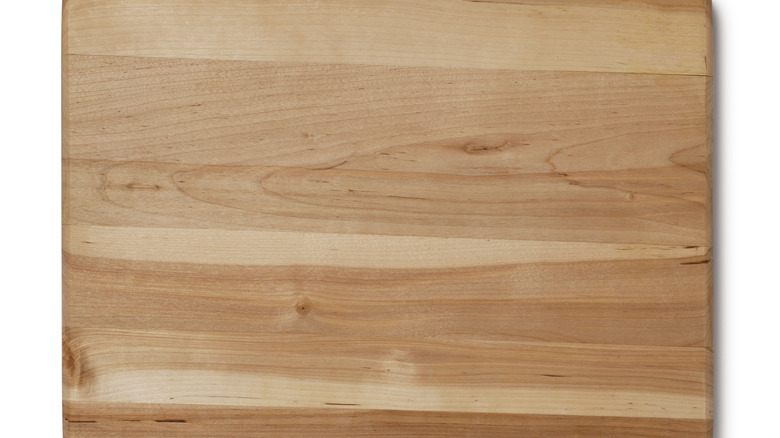
Versatility is an important factor to consider when purchasing kitchen supplies. Finding items with multiple ways to use them is a major score, especially if you’re short on kitchen storage space. One easy way to embrace versatility is to only buy cutting boards that allow you to use both sides of the board (and you should especially be flipping wooden cutting boards after every use).
Some cutting boards, especially decorative boards, have feet that elevate them above the work surface. These might be aesthetically pleasing, but they limit the board’s use. When you only use one side of a cutting board, that side will inevitably wear down faster. Your board will last longer if you can alternate sides with each use.
Boards with only one usable side will also take a beating when washed. Double-sided boards also allow you to use each side for different purposes. You can use one side to hold or cut raw proteins, then flip the board to use the clean side for other foods.
Utilize multiple boards while cooking to prevent cross-contamination
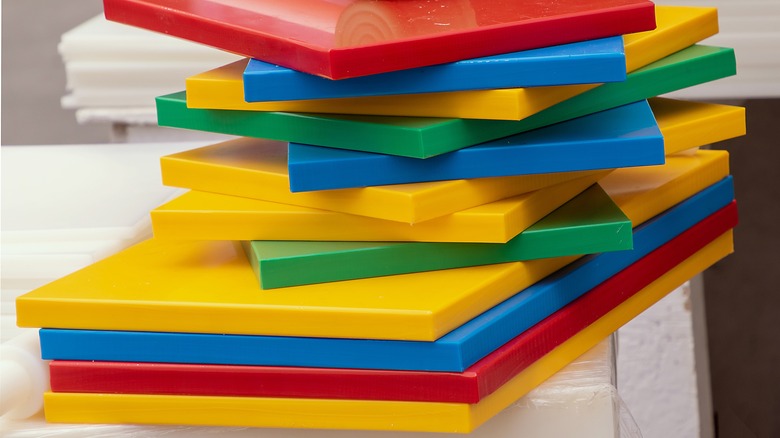
Cross-contamination can lead to bacteria growth that can cause illness and even worse. There are numerous ways commercial kitchens combat cross-contamination, and you can use at least one of these practices in your home kitchen, as well.
In many professional kitchens, cutting boards are not a one-board-fits-all tool. Most designate different cutting boards for different types of food. The boards are often color-coded to make it easy for employees to select the right board. My personal chef kit included at least three cutting boards in three different colors, with each color used for a different type of food. In many restaurants, red cutting boards are reserved for raw meat. Green boards are for fruits and vegetables, and blue for cooked foods.
The color coordination is optional, but if you’re questioning whether it’s safe to use the same cutting board for everything, it’s best to use multiple boards while you cook to minimize the risk of cross-contamination. Separate boards keep any bacteria present from being passed to other foods.
Avoid soak wooden cutting boards
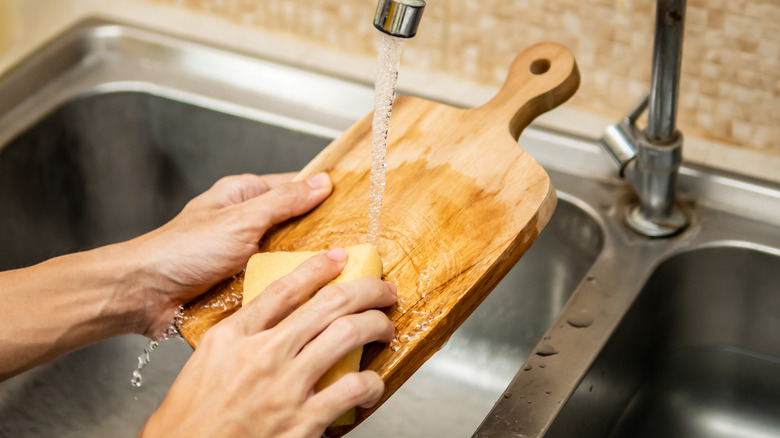
Soaking dishes is a common practice, especially if they have tough, stuck-on stains or if you don’t have the energy to clean up immediately after cooking. However, if you’re using wooden cutting boards, you should avoid soaking them at all costs, as it’s not one of the best ways to clean them.
Wooden cutting boards have a permeable surface, which means water will seep into the wood if it’s left in water for a long time, and water can damage wood. Soaking a wooden cutting board can cause your board to swell, warp, and eventually crack. Excessive moisture can also promote the growth of mold and bacteria, which can compromise the board’s safety.
You should also avoid laying a wet wooden cutting board flat. If water is trapped underneath the board, it can facilitate bacteria growth. I lay my wet wooden cutting boards on a clean, dry kitchen towel so the towel absorbs the excess moisture. It’s imperative that you dry your wooden cutting boards completely with either paper towels or a towel to minimize damage to your board.
Keep cutting boards away from high temperatures
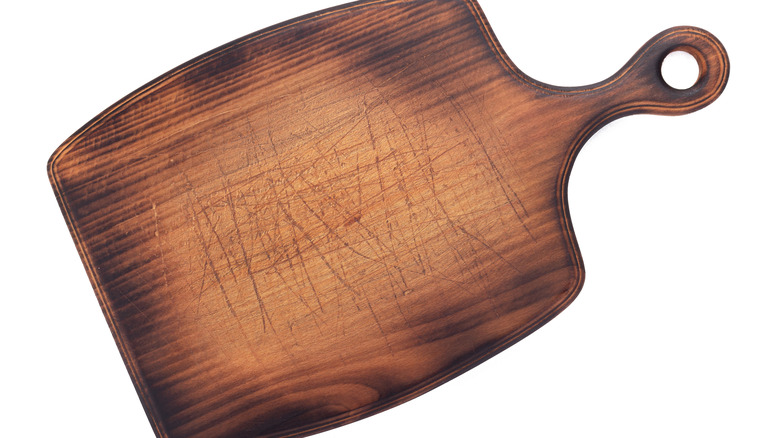
High heat can cause trouble in the kitchen in more ways than one. An oven that is too hot can cause your cookies to burn as they bake, and high heat on your stovetop can cause burning and smoking, which sets off smoke alarms. High heat is also a problem for your cutting boards, no matter what material they’re made of.
Wooden boards, in particular, are sensitive to high heat. Exposure to temperatures above 104 F can change their texture, making them dry and brittle. It can also cause them to crack or warp. Even bamboo cutting boards, which can withstand temperatures up to 400 F, will burn if pots or pans taken directly from the oven are placed on them.
You should also avoid exposing plastic cutting boards to high temperatures. Plastic boards don’t typically crack, like wooden boards, but they can melt and warp if hot pots or pans are placed on them. Most plastic cutting boards can withstand the heat from a spin in the dishwasher, usually between 130 F and 140 F, but higher temps could cause melting or warping. Dishwasher temperatures are outside the safe range for most wooden cutting boards, so it’s best to handwash them.
Bench scrapers can transfer food from your cutting board
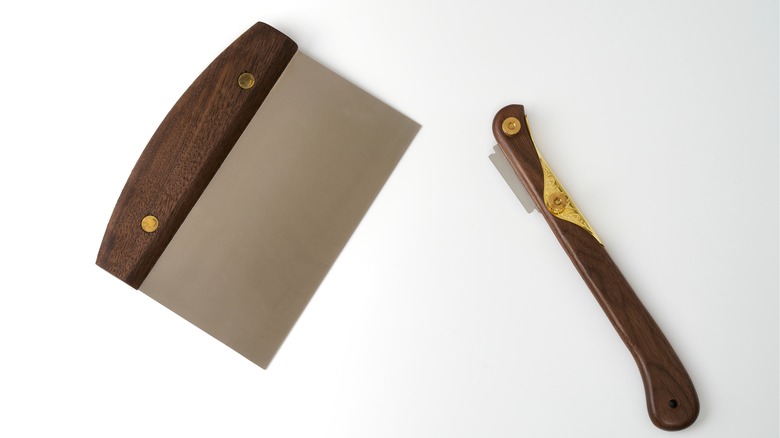
A bench scraper is a tool every kitchen should have. It is designed for multiple tasks. It helps cooks move and cut dough. Bench scrapers can also be used to cut bar cookies or desserts. I have used them to cut butter into flour to make dough, but more than anything, I use my bench scraper to move chopped food from my cutting board.
The bench scraper’s dull edge makes it a safer option than dragging the blade of your knife along your cutting board in an attempt to transfer food. Bench scrapers have a wide surface area that can easily accommodate more food than your narrower knife blade. There’s also zero risk of cutting yourself when using a bench scraper to move food from your board to your pan, and you’re less likely to spill as much during your transfer.
Choose the right size cutting board for the job
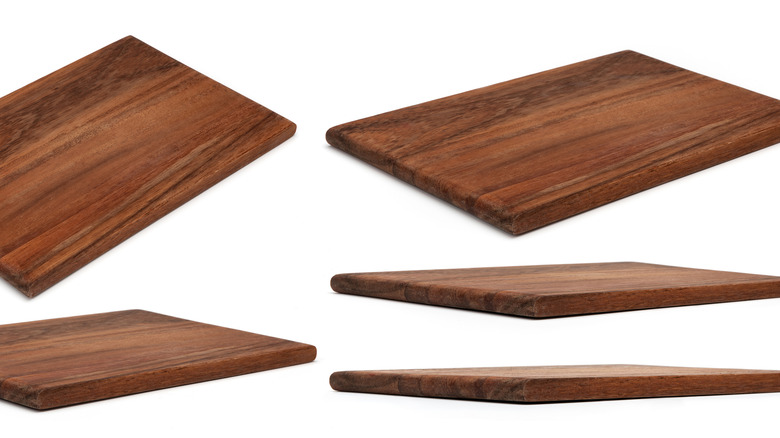
Choosing the right size cutting board for your kitchen is essential for efficiency and convenience. The goal is to have a board that’s large or small enough to accommodate the foods you cook regularly, so you’re not storing boards that aren’t useful.
One key aspect to consider is your counter space. Measure it to make sure you select boards that will fit your workspace, with at least 3 to 4 inches of counter space to spare. You should also make sure you have enough room for the rest of your cooking utensils, as well. Standard cutting boards measure 12 by 18 inches, but you can select larger or smaller boards depending on the size of your workspace, the amount of food you typically cook, and the storage space you have available. In terms of thickness, look for boards that are ½ to 2 inches thick.
Know when to sanitize your cutting board and when to simply clean it
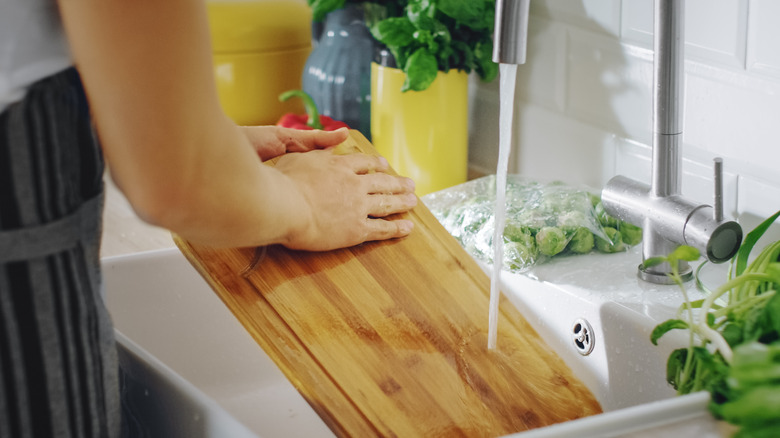
There is a difference between cleaning and sanitizing, and it’s important to know when to do both with your cutting boards. It’s possible for your boards to be clean but not sanitized and sanitized and not clean. So, what’s the difference?
Cleaning your cutting board means there is no visible food left on your board, but clean boards can still harbor invisible germs and bacteria that can be harmful. In professional kitchens, items are washed and then sanitized for extra protection. In order to properly sanitize, the water used has to be at least 171 F. This is the temperature needed to get rid of any bacteria or pathogens that might be present. In home kitchens, sanitizing is usually done in the dishwasher since most kitchen sinks only get to 120 F max. Keep in mind that most residential dishwashers don’t reach 171 F, so you’ll have to rely on a sanitizing solution to get the job done. Add a tablespoon of bleach to a gallon of water and submerge your boards for at least 10 seconds to sanitize without hot water. Cutting boards should be sanitized after each use because they are in constant contact with your food.
Don’t serve food on a cutting board
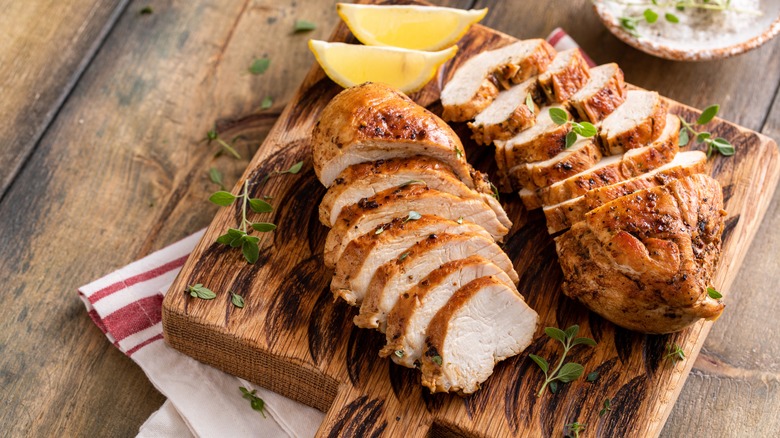
Serving food on wooden cutting boards has become a trend in recent years, with restaurants bringing everything from salads to steaks to the table on boards instead of plates. When catering events, I used wooden cutting boards on buffets to present cheese and charcuterie boards and hors d’oeuvres. It’s an easy way to elevate a dish’s visual appeal. I never used the same cutting boards I used to prep food as serving platters, and you shouldn’t, either.
For food safety purposes, it’s best to use cutting boards only for cutting. If a cutting board has been used to cut raw meat or poultry, it could potentially carry bacteria that can be transferred to the cooked food you’re serving. Boards with deep cuts on the surface should also not be used for serving, as those cuts can harbor bacteria. To keep your food and your guests safe, never use the cutting boards you use for prep work for serving. Purchase additional boards for decorative or serving purposes.
Know when it’s time to replace your cutting boards

Flas100/Shutterstock
Cutting boards can last a long time. In fact, they’re known for their durability, but they don’t last forever. No matter how much you might love your favorites, it’s important to know when to toss out the old and invest in new cutting boards. With cutting boards, the determining factors in when they should be replaced are wear and tear and food safety, a common theme with cutting boards.
Well-worn boards with lots of cuts and gauges are difficult to sanitize and should be replaced before they cause an illness. You should also toss any boards that are warped or cracked or boards that hang on to lingering odors that you can’t get rid of. Plan on replacing the cutting boards you use most once a year. You can likely extend that time if you use multiple boards, each for a specific food.



